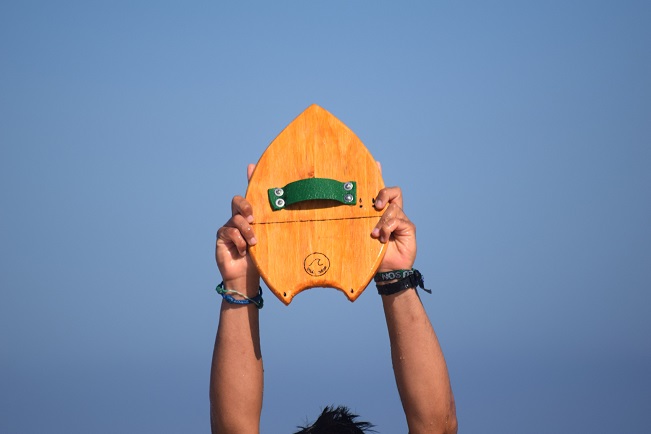
If you’re looking to get into handboard bodysurfing – you’ve come to the right place. I’ll talk about the basics of handboard surf style and everything else you need to know before you start chasing waves.
If you intend on going to the ocean at any point, it’s highly recommended you learn how to bodysurf. Even if you aren’t too keen on picking up bodysurfing as a hobby, you can use it for safety reasons. Bodysurfing is considered a key part of the learning curve to becoming a great all-around Aquaman or Aquawoman.
Unfortunately, bodysurfing isn’t as popular as it used to be, and has taken a back seat to regular and stand up surfing. The reason I say unfortunately, is because bodysurfing is arguably the best type of surfing to learn how the ocean works. You learn about the dynamics of the waves, and it gets you immersed in the water so you can feel the flow and ebb much more acutely than you would with any other waterboard sport.
People who start taking surfing classes are leaps ahead if they’ve spent even a few hours learning how to bodysurf. Bodysurfing gives you a simple understanding and appreciation of the ocean that you can’t get learning with a board. Learning how to bodysurf takes some practice, but once you get it right you’ll never want to leave the ocean, and you’ll never forget the first wave you’ve caught.
It’s easy to get discouraged when the only experience you’ve had with waves is getting dumped by them. By following a few simple steps and taking some time to practice, you’ll get good at bodysurfing in no time.
Preparation
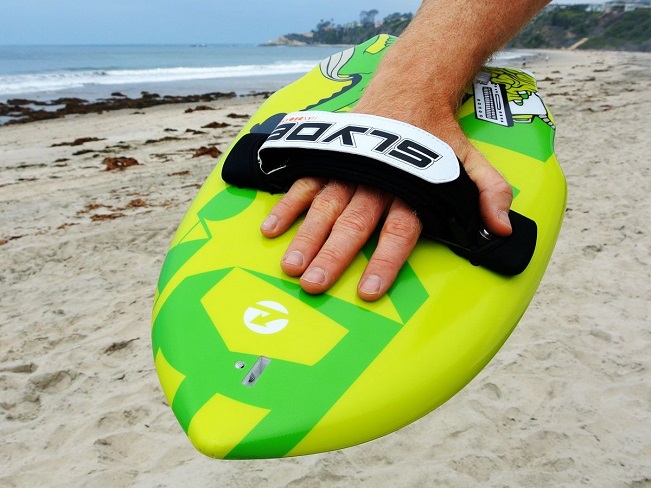
Many people say that surfing, bodysurfing or any other type of watersport, for that matter, starts in the ocean, which isn’t true. Your preparation starts before you enter the ocean, and that will be the deciding factor in how successful you are at bodysurfing. Just like when performing any other type of physical activity, you should stretch properly to reduce cramping and injuries.
Equipment
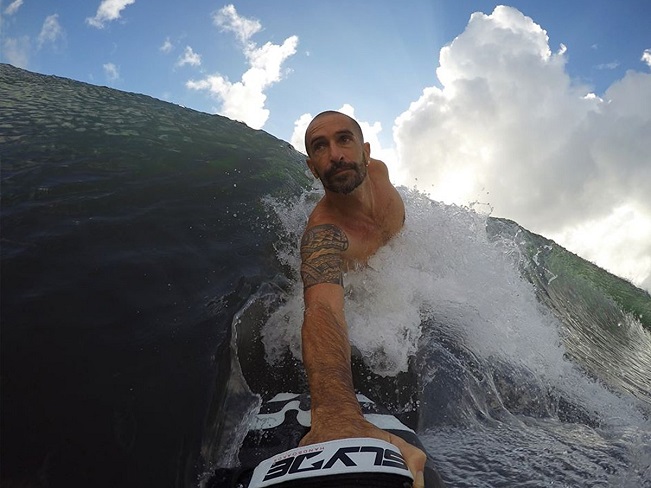
From the fins to the costume and handboard surf beginners should make sure to get quality equipment as malfunctions can be dangerous or embarrassing. You don’t want to lose your trunks in the ocean and walk out to the beach in your birthday suit. As funny as it may sound, it happens to the best of us. Even worse, you may lose a fin in a big wave and end up swimming back in heavy surf without any fins. Lifeguards will frown at the sight of you, and you’ll likely have to switch beaches.
Fitness
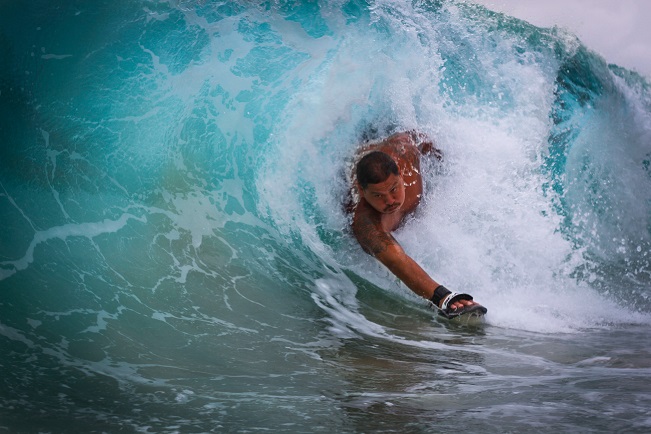
Although you’ll basically be laying on the water, you still have to be in a decent shape to bodysurf. Working out can help you be a better bodysurfer, but having endurance is more important because bodysurfing is all about the cardio, not the strength. Once you get into bodysurfing, you can rest assured you’ll be spending a lot of calories per day and stay fit.
Breathing
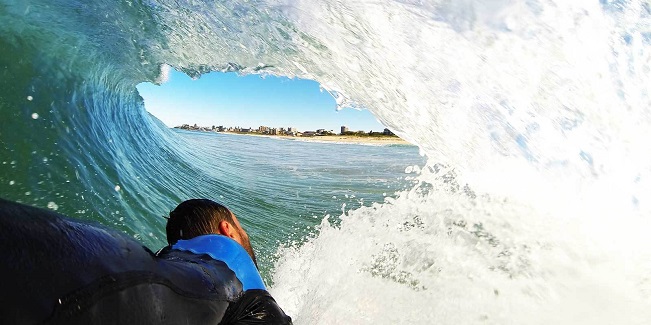
Practising breathing and learning how to hold your breath are important parts of any type of watersports, and this is especially true when you’re sliding face-down on a 2-3 metre wave. Practice holding your breath and increase your lung capacity by deep breathing throughout the day. Start off by determining your base time, and take a few minutes in the morning to deep breathe while lying flat on your back. Inhale slowly, hold for a few seconds, then exhale.
Dangers of Bodysurfing
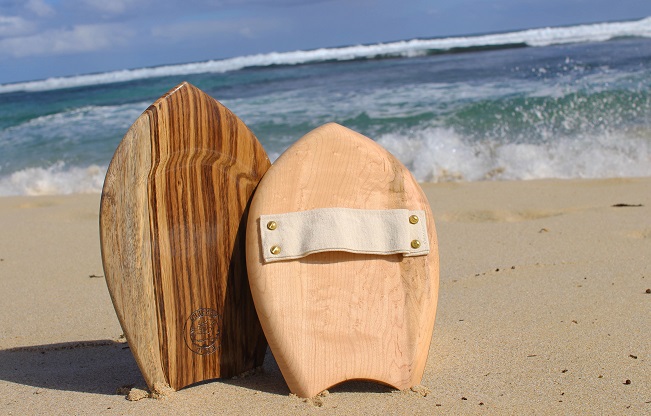
Before you set foot into the ocean, take a minute or two to visually inspect what’s in front of you. Just like you wouldn’t cross the road without looking both sides, you shouldn’t get into the ocean before checking out what you’re getting yourself into. Check for potential rip currents and sideway water movement.
Rough churring water is a telltale sign for rip currents, and they can send you far into the ocean in the blink of an eye. If you’re inexperienced in dealing with rip currents, skip that day and stay ashore. Then, check for set waves. Experienced surfers know that set waves are a mix of complex and varied set of circumstances. Set waves is the name given to a set of larger waves rolling in. Their size can vary from day to day, and even from hour to hour.
And lastly, always be aware of your position. A good idea is to choose a stationary object that’s in front of you on the beach, like the lifeguard tower, a building nearby, etc. This allows you to always be aware of where you are and to act swiftly if you see yourself moving too much in either direction. Being washed out is arguably the most dangerous thing that can happen. It’s not fun, and it happens much faster than you can imagine.
























